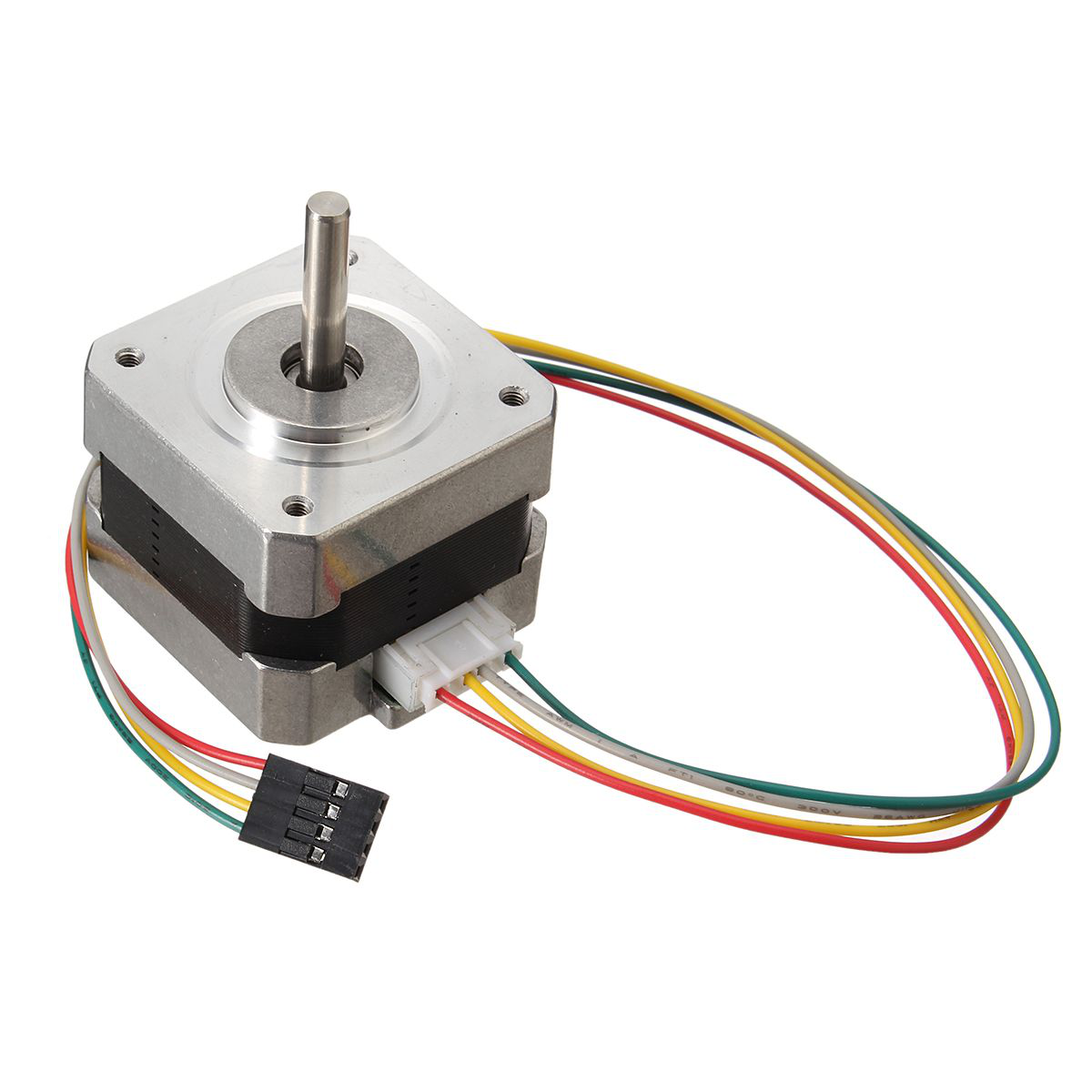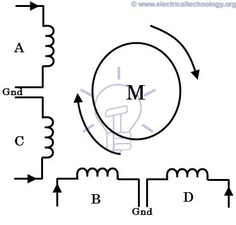There are two types of two-phase step motors: Unipolar stepper motors and Bipolar stepper motors. The operation of both types of motors is dependent on their magnetic coils, which have different windings from one another, making their operation distinct.
The centre tap wire, which splits the complete coils of the winding in half, is the main difference between “unipolar” and “bipolar” stepper motors. To control current flow in both directions, a bipolar driver would require twice the number of transistors as a unipolar driver.
To understand how they work, one must first understand how a Unipolar stepper motor and a Bipolar stepper motor work, as this will help to explain the differences.

WORKING OF UNIPOLAR STEPPER AND BIPOLAR STEPPER MOTOR
Source: Pinterest
How does Unipolar Stepper motor works?
The Unipolar stepper motor includes two windings per phase, following the magnetic field in each direction. These two windings are made by the aid of commutation circuit, which can be possible with the help of the arrangement of the reversible magnetic poles that can easily switch themselves without affecting the direction of the current. These stepper motors are easier to operate and therefore, are preferred most by hobbyists to find the exact angular movements.
How does bipolar motors work?
Bipolar stepper motors, unlike Unipolar stepper motors, have a separate winding for each phase; in such windings, the flowing current must be reversed to make a magnetic pole reversal, which complicates the driving circuit structure— generally an H-bridge configuration.
Because the windings in these motors are employed more effectively, they are more powerful than unipolar motors having the same weight.

WORKING OF UNIPOLAR STEPPER AND BIPOLAR STEPPER MOTOR
Source: Pinterest
What makes them different from one another?
Their names Unipolar and Bipolar themselves refer to how the coil windings are configure within the stepper motor, and the major difference that separates them from one another is the type of magnetic field that they are capable of producing.
Though, the main difference revolves around their coil arrangement and the windings; when a bipolar stepper motor includes the stator coil windings with two terminals. The unipolar stepper motor has its stator coil windings with three terminals due to the presence of a center tap.
The uniqueness of the two stepping motors lies in the switching scheme that they require in order to operate well. In case of bipolar scheme of coiling, there is a need for two switches changeover. So that the voltage polarity is able to get reverse as well.
But when it comes to the unipolar scheme of coiling. Only one switch changeover can do wonders. This is due to the presence of the center tap that stays fixated on the positive end of the railing. Leaving only the need to switching the negative supply to any of the ends of the coil.
Conclusion
On comparing the working of both the types of stepping motors, undoubtedly, the operation of a unipolar stepping motor is simpler and less expensive. However, one trait it lacks is the ability to generate a strong magnetic field. This is useful in a Bipolar stepping motor because its coils can produce a greater magnetic field, which increases torque.





